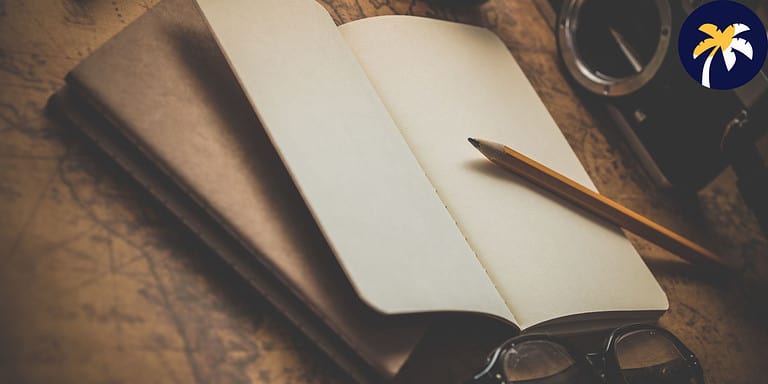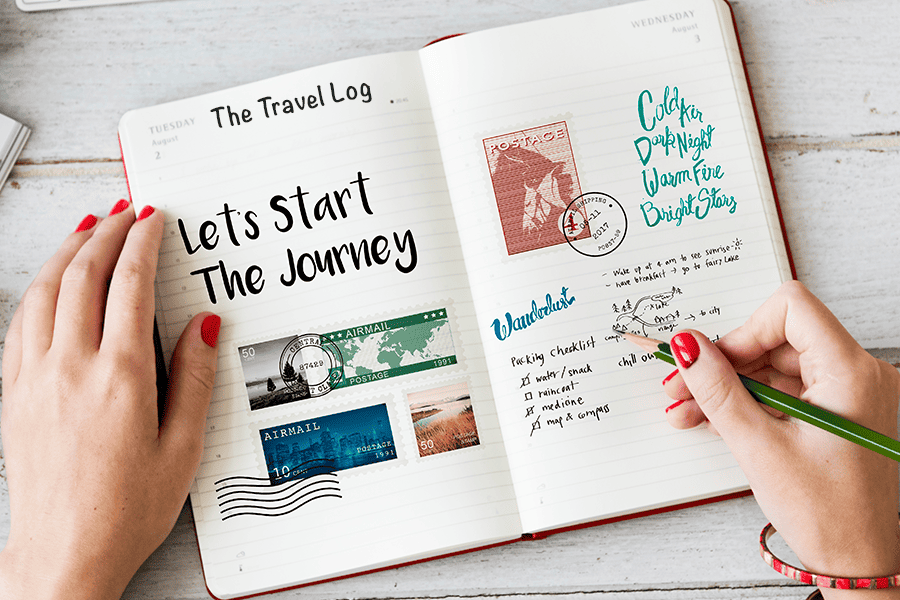Embarking on journeys and exploring new horizons is a thrilling experience. To make these moments last, many travelers turn to the art of keeping a travel log. In this article, we delve into the world of travel logs, their significance, and the benefits they offer. From preserving precious memories to inspiring others, discover how a travel log can become your ultimate travel companion.
What is a Travel Log?
A travel log is a record of your journeys, a personal chronicle that captures the essence of your travel experiences. It serves as a window into your adventures, allowing you to document the places you visit, the people you meet, and the emotions you encounter along the way.
A log can take various forms, from a traditional written journal to a digital blog or even a collection of photographs and videos. It is a space where you can express your thoughts, reflections, and insights, preserving memories and creating a narrative of your travel stories.
It is not just a collection of facts and figures; it is a tapestry of experiences that brings your journeys to life and provides a glimpse into the beauty and wonder of the world you have explored.
The Benefits of Keeping a Travel Log
Preserving memories and experiences:
A travel log acts as a time capsule, preserving the memories and emotions associated with your travel adventures. It allows you to revisit those special moments, relive the experiences, and evoke the same feelings you had during your travels.
Capturing details for future reference:
A travel log serves as a valuable resource, capturing essential details such as itineraries, accommodation information, and local recommendations. It becomes a reliable reference for future trips or when sharing recommendations with fellow travelers.
Inspiring and sharing travel stories:
Your travel log can inspire others to explore new destinations and embark on their own adventures. By sharing your experiences, insights, and recommendations, you contribute to the collective knowledge of the travel community, fostering a sense of connection and inspiration.
Tips for Creating an Engaging Travel Log
Choose a format that suits your style:
Select a format that resonates with you, whether it’s a traditional written journal, a digital blog, or a combination of visuals and narratives. Find the medium that allows you to express yourself authentically and enhances your storytelling.
Include essential information in your entries:
Ensure that your travel log captures important details such as dates, locations, and key highlights of each adventure. Include vivid descriptions, anecdotes, and personal reflections to bring your experiences to life.
Incorporate visuals and multimedia elements:
Incorporating visuals and multimedia elements into your travel log adds depth, enhances the storytelling experience, and brings your adventures to life. Here are some ideas on how to effectively utilize visuals in your travel log:
- Photos: Capture the essence of your travel experiences by including high-quality photographs in your travel log. Select images that showcase the landscapes, landmarks, people, and moments that made your journey memorable. Embed them within your entries or create dedicated photo galleries to visually complement your written narratives.
- Videos: Create engaging and immersive content by integrating videos into your travel log. Use short video clips to capture the sights and sounds of your destinations, document activities and events, or record personal reflections. Video snippets can be embedded directly into digital platforms or linked to external video hosting platforms like YouTube or Vimeo.
- Maps: Include maps in your travel log to provide visual context and help readers navigate through your journey. You can mark the locations you visited, highlight specific points of interest, or trace your route. Digital tools and apps often offer built-in map integration features, allowing you to create interactive maps with pins or annotations.
- Sketches and Drawings: If you have artistic skills or enjoy doodling, incorporate sketches and drawings into your travel log. Create quick sketches of landscapes, architectural details, or memorable moments. These hand-drawn illustrations add a unique and personal touch to your entries.
- Collages: Create collages using a combination of photographs, tickets, postcards, and other memorabilia. Collages allow you to visually represent a collection of memories or a specific theme in a visually appealing and creative way. You can either create physical collages in your physical travel log or use digital collage-making tools for your digital log.
- QR Codes: Consider incorporating QR codes into your travel log. These codes can be linked to additional content such as videos, audio recordings, or online resources related to your travel experiences. This interactive feature adds an extra layer of engagement and enables readers to access supplementary information with a simple scan.
Organizing and Managing Your Travel Log
Categorizing entries by destinations or themes:
Categorizing entries in your travel log by destinations or themes is a practical and efficient way to organize your experiences. By grouping entries based on specific locations or common themes, you can easily retrieve information and create a cohesive narrative of your travels.
When categorizing by destinations, you can create sections or chapters dedicated to each place you visit. This allows you to capture the unique aspects, highlights, and recommendations for each location, making it convenient to revisit specific details when planning a return trip or sharing your adventures with others. It also helps in comparing different destinations and reflecting on the diversity of your travel experiences.
Utilizing digital tools and apps for organization:
In today’s digital age, numerous tools and apps are available to help you organize and manage your travel log efficiently. Here are some popular options to consider:
- Note-taking apps: Apps like Evernote, OneNote, or Google Keep provide a convenient platform for creating and organizing digital travel logs. You can create separate notes for each entry, add tags, attach photos, and even synchronize your notes across devices for easy access.
- Travel-specific apps: Several apps are designed specifically for travel logging and organization. TripIt, for instance, allows you to create itineraries, add notes, and store important travel documents all in one place. Travefy and Polarsteps are other popular apps that provide features for tracking and documenting your trips.
- Cloud storage services: Utilizing cloud storage services like Google Drive, Dropbox, or iCloud ensures that your travel log is accessible from any device with an internet connection. You can create folders to organize your entries and upload photos, videos, or text documents directly to the cloud.
- Digital journaling platforms: Platforms like Day One, Journey, or Penzu are dedicated to digital journaling and offer features specifically tailored for travel logging. These platforms often include rich text formatting options, photo integration, location tagging, and automatic date/time stamps.
- Social media platforms: Social media platforms like Instagram, Facebook, or Pinterest can also serve as a medium for creating a travel log. You can create dedicated accounts or use hashtags to categorize and archive your travel posts. Additionally, these platforms allow you to interact with a community of fellow travelers.
Creating a system for easy retrieval and access:
Creating a system for easy retrieval and access is essential to make the most of your travel log. Here are some tips to help you organize and manage your entries effectively:
- Use consistent tags or labels: Assign tags or labels to your entries based on relevant keywords, such as destination names, activities, or memorable experiences. This makes it easier to search and retrieve specific entries related to a particular tag.
- Create an index or table of contents: For physical travel logs or notebooks, consider maintaining an index or table of contents at the beginning. This allows you to quickly locate specific entries by page numbers or section titles.
- Utilize digital search functions: If you’re using a digital platform or app for your travel log, take advantage of the search function. Most digital tools offer search capabilities that enable you to find specific entries by keywords, dates, or tags, saving you time and effort.
- Arrange entries chronologically: Organize your entries in chronological order, starting from the earliest to the most recent. This timeline-based arrangement helps you retrace your journey and provides a sense of progression throughout your travel log.
- Include cross-references: If an entry refers to a previous or related entry, consider adding cross-references or hyperlinks to facilitate navigation between related content. This allows you to establish connections between entries and create a seamless flow of information.
- Use dividers or tabs: For physical travel logs, use dividers or tabs to separate different sections or categories. This makes it easier to flip to specific sections and adds a visual element to your organization system.
- Backup your digital travel log: If you maintain a digital travel log, ensure regular backups of your entries to prevent the risk of losing valuable content. Store your backups in multiple locations, such as cloud storage or external drives, for added security.
Frequently Asked Questions
A. Should I keep a digital or physical travel log?
The choice between a digital or physical travel log depends on personal preference. Physical logs offer a tangible experience and can be cherished as keepsakes, while digital logs provide ease of sharing, multimedia integration, and accessibility across devices.
B. Can I use a travel log for trip planning?
Absolutely! Your travel log can serve as a valuable resource for future trip planning. You can refer back to your previous experiences, recommendations, and itineraries to craft new adventures or enhance existing plans.
C. How can I ensure the privacy and security of my travel log?
If privacy is a concern, be mindful of the platform you choose for your digital travel log. Select reputable platforms with robust privacy settings and consider sharing only what you’re comfortable with. For physical logs, keep them in a safe place and exercise caution when sharing personal details.
Conclusion
In the ever-changing landscape of travel, the power of a travel log remains constant. By capturing memories, preserving details, and inspiring others, a travel log becomes a treasure trove of experiences. So, whether you choose pen and paper or embrace digital platforms, start documenting your adventures today. Let your travel log be a testament to the transformative power of exploration.
Fun Fact: The famous explorer and author, Marco Polo, kept a travel log during his epic journey across Asia in the 13th century. His detailed accounts, known as “The Travels of Marco Polo,” became one of the most influential travel logs in history, inspiring generations of adventurers to follow in his footsteps.




1 thought on “Travel Log: The Art of Documenting Adventures”